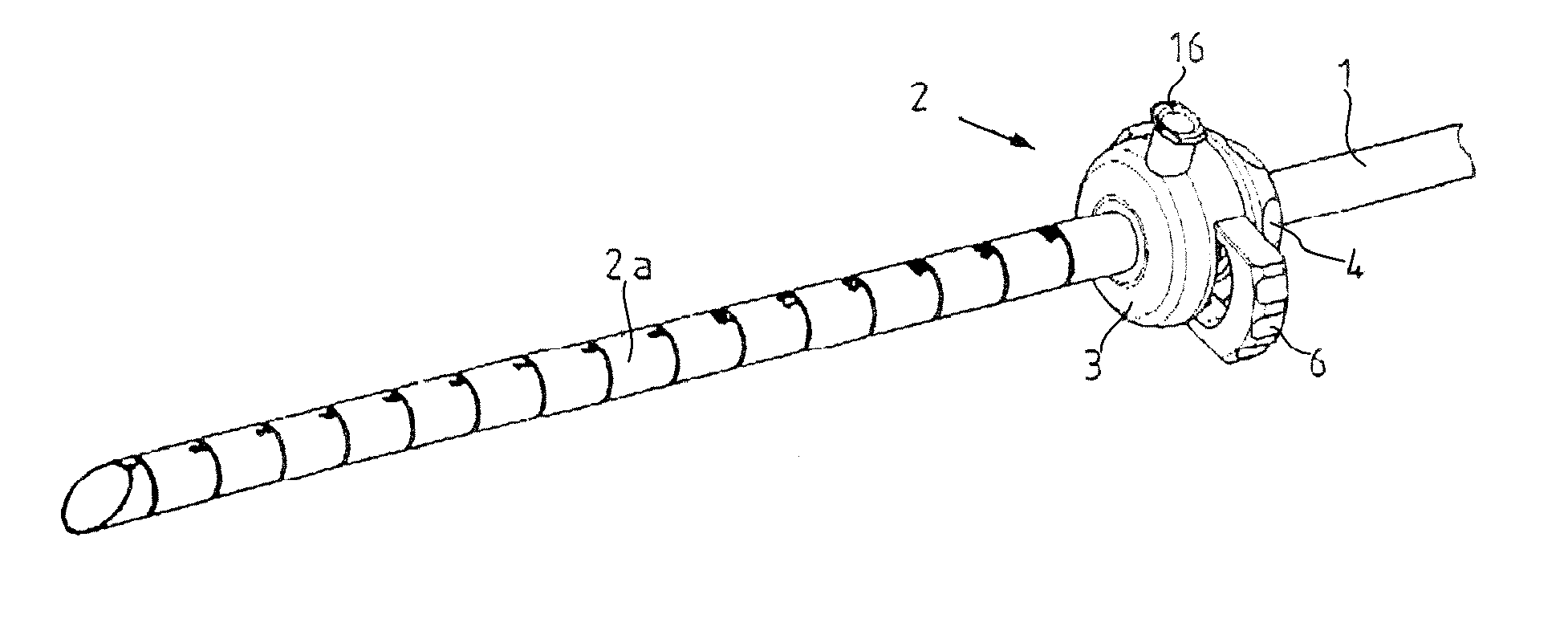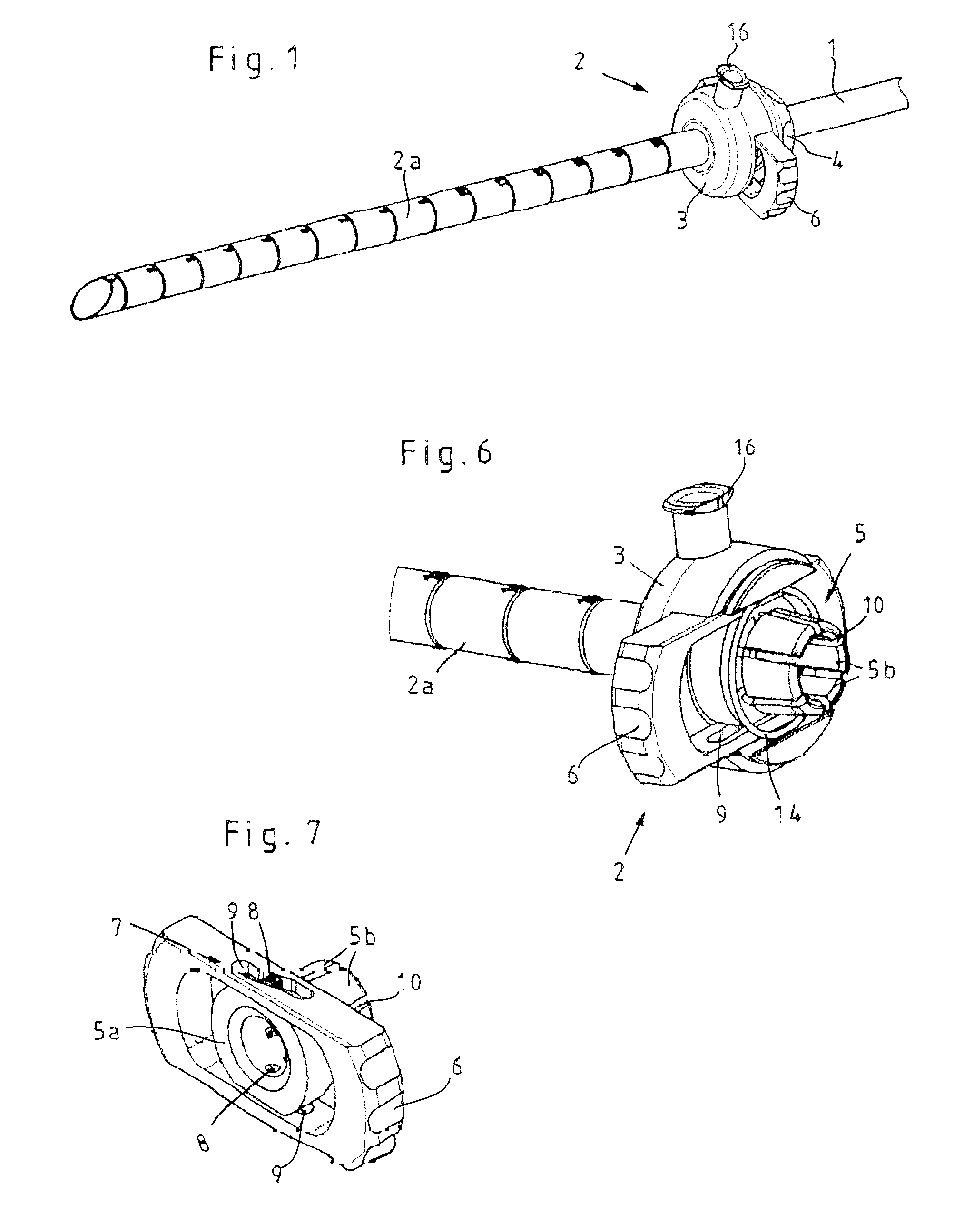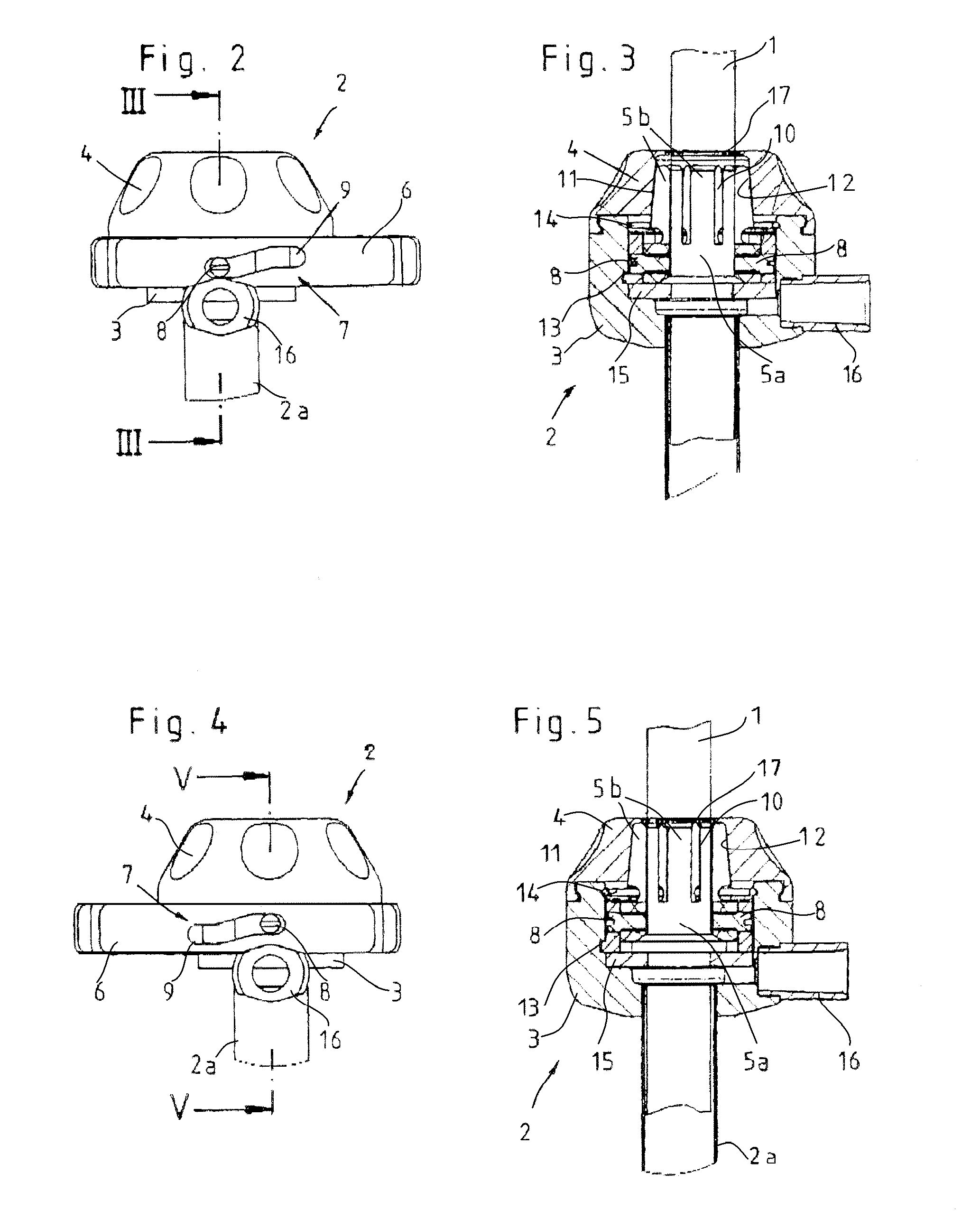Device for affixing to cylindrical components of medical instruments
a technology for cylindrical components and clamping devices, which is applied in the direction of mechanical equipment, applications, manufacturing tools, etc., can solve the problems of affecting the operation of eccentric tappet levers, affecting the operation of clamping devices, and affecting the operation of the eccentric tappet lever, etc., and achieves the effect of simple manufacturing and operation
- Summary
- Abstract
- Description
- Claims
- Application Information
AI Technical Summary
Benefits of technology
Problems solved by technology
Method used
Image
Examples
Embodiment Construction
[0026]The device illustrated in FIGS. 1 through 7 for affixing medical instruments onto cylindrical components 1, such as instrument shafts or optical systems of endoscopic instruments, consists essentially of an intake part 2 that can be mounted on the cylindrical component 1 and in which the actual clamping mechanism is positioned. The intake part 2 consists, as can be seen in particular from FIGS. 3 and 5, of a housing 3 that can be closed by means of a cover cap 4.
[0027]Claming devices of this type are used in order to secure other components, such as handgrips, guides, or even medical instruments, to a medical instrument.
[0028]In the illustrated embodiment, the intake part 2 includes an applied outer tube 2a for inserting the cylindrical component 1 that is to be affixed. It is also possible, of course, to configure the intake part without this outer tube 2a, so that the cylindrical component 1 that is to be affixed extends in the longitudinal direction through the intake part ...
PUM
 Login to View More
Login to View More Abstract
Description
Claims
Application Information
 Login to View More
Login to View More - R&D
- Intellectual Property
- Life Sciences
- Materials
- Tech Scout
- Unparalleled Data Quality
- Higher Quality Content
- 60% Fewer Hallucinations
Browse by: Latest US Patents, China's latest patents, Technical Efficacy Thesaurus, Application Domain, Technology Topic, Popular Technical Reports.
© 2025 PatSnap. All rights reserved.Legal|Privacy policy|Modern Slavery Act Transparency Statement|Sitemap|About US| Contact US: help@patsnap.com



